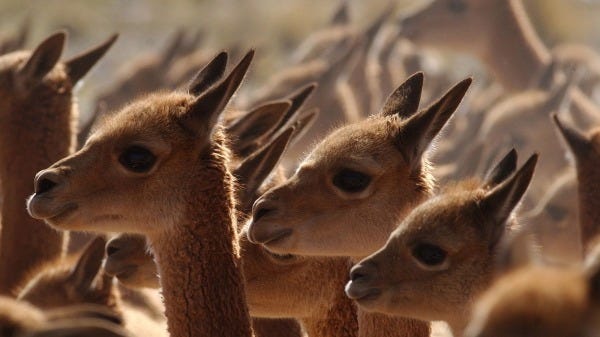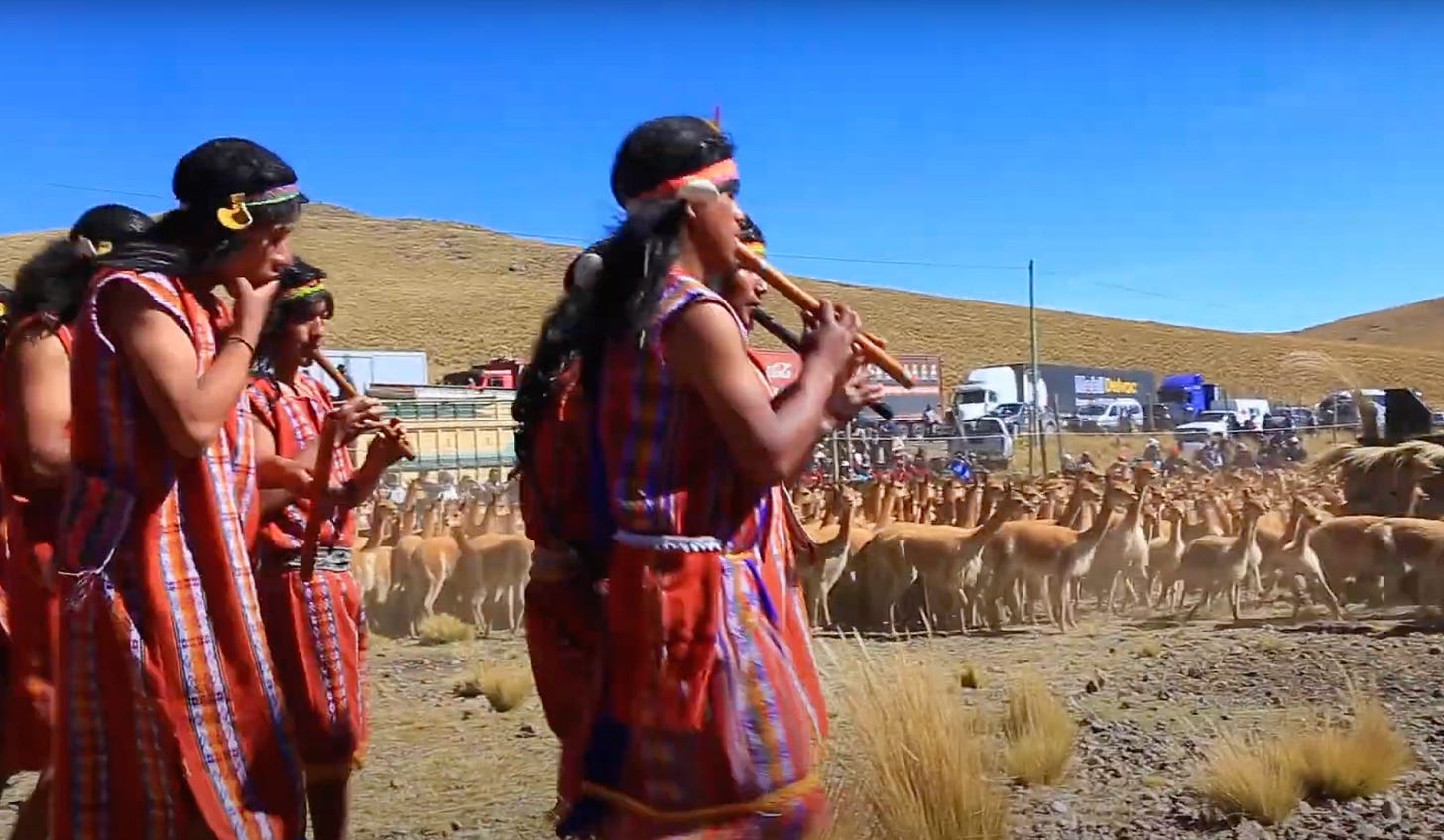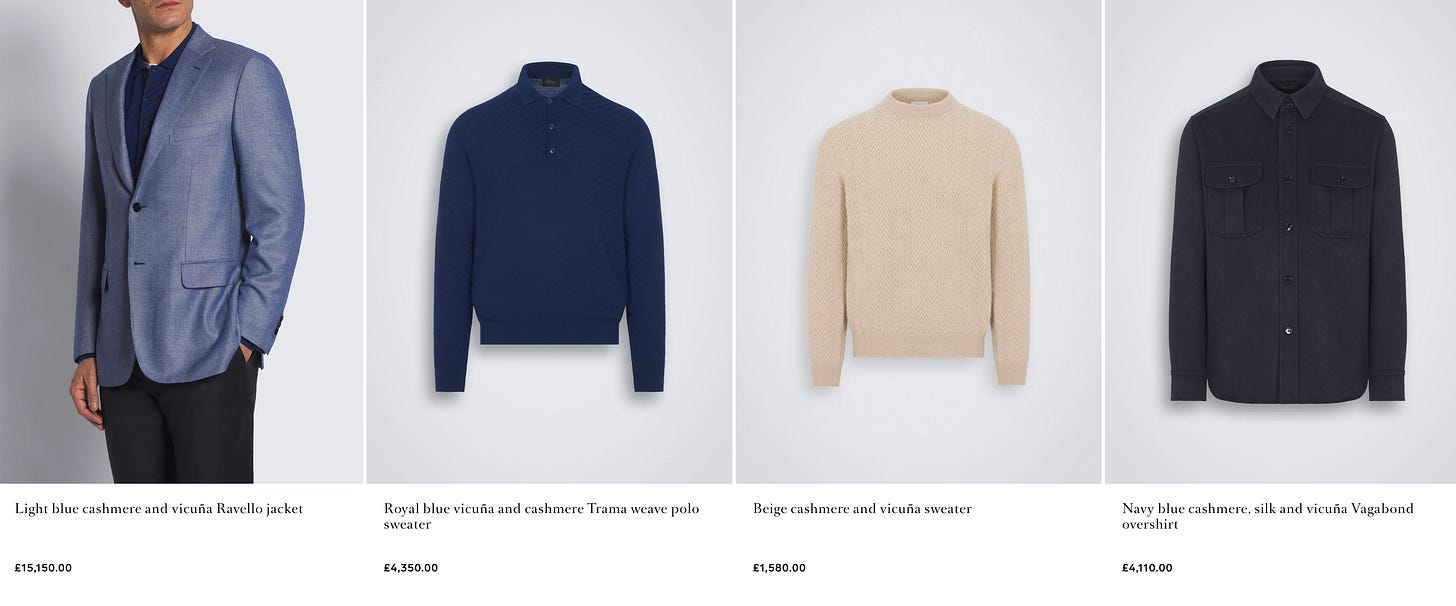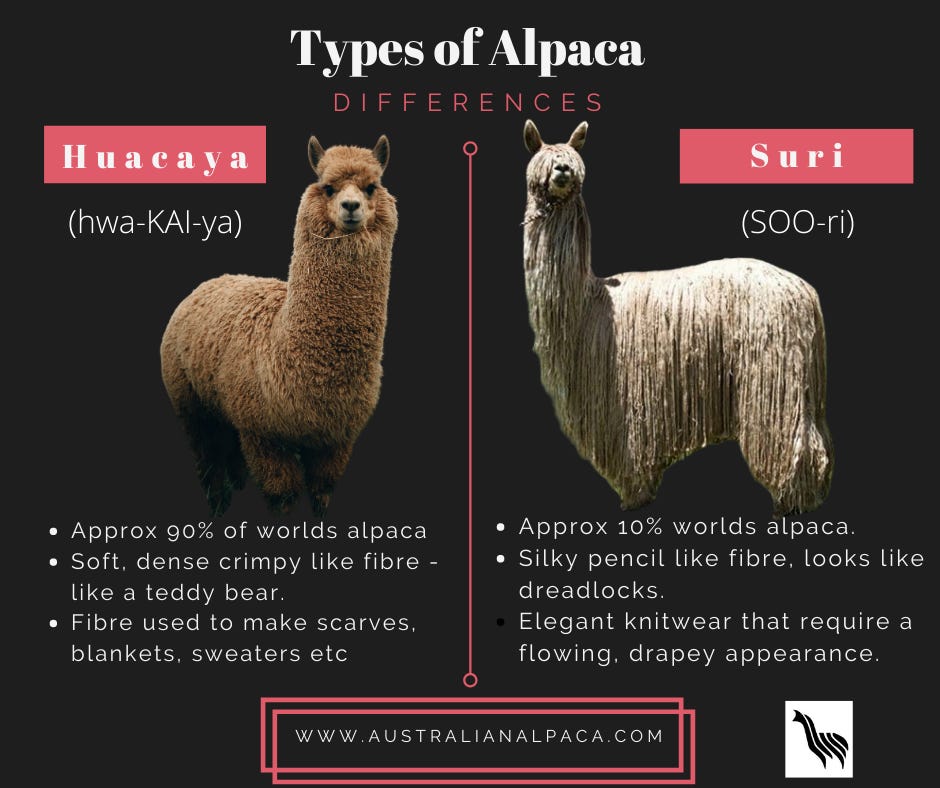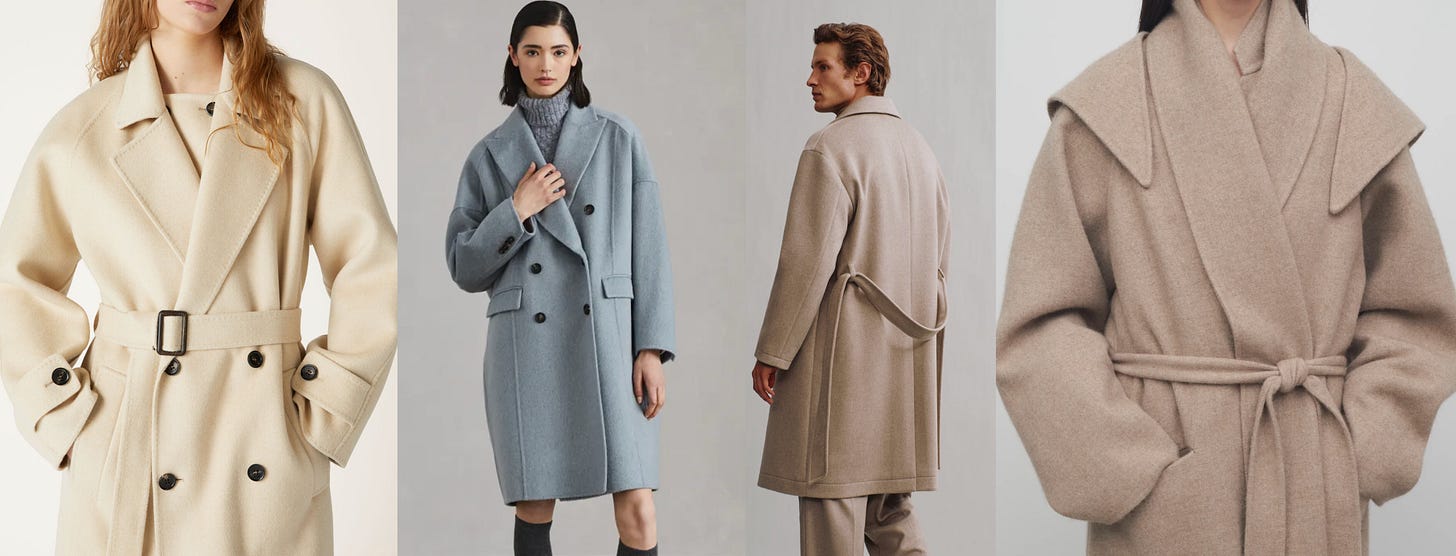How to Choose the Softest, Warmest, and Most Luxurious Coats: A Detailed Guide to 4 Premium Fabrics
This article details and distinguishes 4 premium animal hair fabrics used for coats, including alpaca, vicuña, cashmere, and camel hair, providing an in-depth analysis. Lower-priced, coarse, and less insulating materials like yak wool, regular sheep wool, mohair, and raccoon wool are not covered in detail.
A special note on sheep wool: While there are many varieties, such as the fine Merino Wool which isn't scratchy, and Virgin Wool commonly used in suits, sheep wool generally underperforms compared to alpaca, vicuña, cashmere, and camel hair in terms of warmth. It tends to be heavier and less suitable for fall/winter knitwear and coats. These high-quality wool types are more commonly used in suits, trousers, and vests, which is also my preferred application.
Yak wool has similar quality to regular alpaca, with coarse fibers that can be scratchy. Due to its primary production in the Tibetan Plateau region, it's underdeveloped in Asian countries and rarely used by mainstream Western fashion brands. Additionally, yak wool typically comes in coal or charcoal black and is difficult to redye. Overall, yak wool garments are scarce and not recommended for purchase, given better alternatives and limited design options, mostly appearing in basic styles.
Ranking by price, softness, and luster:
Vicuña > Cashmere > Camel hair > Alpaca
Ranking by breathability and warmth:
Vicuña > Camel hair, Alpaca > Cashmere
Vicuña and Alpaca include English terms because they belong to the camelid family. Within camelids, Vicuña and Alpaca are the main types used in clothing. Alpaca further divides into premium Suri Alpaca and regular Huacaya Alpaca, which will be covered in dedicated sections below.
Scientific Principle
Before introducing these four fabrics, let's first explore the effects of fiber diameter, scale layer, and medulla on animal fibers.
Softness mainly depends on the micron fineness of the fibers. The finest fibers in the world are silk and Vicuna, ranging from 5 to 10 microns. If the fiber fineness exceeds 18 microns, human skin will feel prickly. For instance, yak wool exceeds 19 microns, hence it feels prickly. The reason some cashmere feels prickly while others do not is that cashmere fibers can range from 13 to 17 microns; the smaller the number, the softer and more expensive it is. Human hair, with coarse hair at 90 microns and fine hair at 60 microns, is far above 18 microns, which explains why men's beards and crew cuts feel prickly.
Microscopic images reveal the fiber fineness of different fabrics. The leftmost image shows the coarsest wool, followed by superfine wool, which is almost as fine as cashmere. Wool fibers vary greatly due to the diversity of sheep breeds worldwide, ranging from 14 to 35 microns.
As for plant fibers commonly worn in summer, the image below shows silk, linen, and cotton. Linen often feels prickly because its fibers are coarser than those of silk and cotton.
Note that the fibers of the four animal hairs on the left have coarse scale layers. More and protruding scales reduce glossiness and increase roughness, making the fabric feel prickly. Silk fibers have no scales, giving silk its renowned sheen. Even under a microscope, silk fibers appear glossy and smooth. Vicuna fibers reach a similar fineness and glossiness, with scales more adherent and thinner than cashmere, making Vicuna the best in softness and glossiness among autumn and winter fabrics.
Top-grade superfine cashmere also exhibits finer fibers with more adherent scales, producing coats with a sheen similar to Vicuna.
The image below refers to llama hair rather than Vicuna. This is a point of confusion in translation; Vicuna is sometimes referred to as llama hair or wool in Chinese, but llama fiber, at about 25 microns, is quite coarse. It's best to check the English labels. I will only refer to Vicuna in my articles, sometimes omitting the tilde due to input difficulties.
Now let's discuss the impact of medulla content on animal fibers.
The cross-sectional images below of Alpaca and Camel fibers show a white central area—the medulla. Animal fibers, besides having a protruding scale layer, consist mainly of a cortex and medulla.
Alpaca and Camel fibers have a noticeable and unevenly distributed medulla, whereas silk and wool lack a medulla. The medulla affects dyeing, water absorption, and strength. Larger medulla means higher water absorption and less uniform dyeing.
Dyeing occurs in the cortex. High medulla content leads to uneven dyeing, possibly explaining why camel wool is less commonly used. Despite being found in Inner Mongolia and Mongolia, cashmere is easier to dye, as seen from its round cross-section with minimal medulla. This explains why camel wool coats are mostly in camel or beige colors.
Large medulla also causes camel wool garments to shrink and deform easily after washing and makes Camel fibers prone to breakage and poor cohesion.
Another detail is the uneven thickness of Camel fiber cells, leading to high processing costs. From raw wool to spinnable clean wool, multiple meticulous sorting and cleaning processes are required to remove coarse hairs, dust, and grease, incurring significant labor and time costs.
These four disadvantages explain why camel wool is rarely used in mainstream production.
Vicuña
Llama is primarily used for carrying loads, while llama and alpaca are domesticated, and guanaco and vicuña are wild. They all live in the Andes mountains at an altitude of 4,000 meters, mainly distributed in South American countries like Peru, Bolivia, and Chile, with Peru accounting for about 90% of the total production, nearly all of which is exported. Thus, be cautious about claims of Argentinian alpaca wool; it could be sourced from Peru and processed in Argentina. Some wealthy individuals from the UK and the US fly to Argentina every two years to have alpaca wool clothing made.
Llama wool typically exhibits soft brown shades, with hues like camel, brown, and other earth tones. Since llama wool usually retains its natural color with minimal dyeing, bright colors and pure colors like white or black are rare. However, natural variations can include lighter beige or deeper chocolate tones.
Llama wool is sheared annually in spring, similar to sheep shearing. Post-shearing, alpacas feel slightly cold but comfortable in summer. As temperatures drop, their wool regrows, keeping them warm through winter.
Vicuña wool achieves silk-like fineness, with top-grade vicuña reaching 5-10 microns and regular vicuña around 12.5-13 microns, comparable to the finest cashmere. For example, Loro Piana's mass-produced vicuña series.
The Inca civilization has long protected vicuñas, keeping their population stable at about 3 million. However, after the 16th-century Spanish colonization, vicuñas were heavily hunted, reducing their numbers to 6,000 by the 1960s. In 1976, the CITES convention listed vicuñas as endangered, banning the trade of their precious fibers to curb poaching, and established the first reserves.
This reminds me of the Tibetan antelope, also protected since the 1970s and listed as a first-class protected animal in China. Tibetan antelope wool surpasses cashmere in quality but is even rarer, with minimal circulation in the Chinese market, mostly seen from Nepal.
In 1994, Loro Piana negotiated with the Peruvian government to establish a reserve, completed in 2008. As a reward, they gained the right to collect vicuña wool, which must be obtained from live animals, shorn every two years, and immediately released back into the wild. Loro Piana thus became a leading luxury brand for vicuña fabrics and garments.
Can we hope for a similar conservation approach for Tibetan antelopes?
Vicuña's rarity stems from its endangered status, small population, biennial shearing yielding only 200 grams per shearing, and the fact that vicuñas cannot be domesticated like goats or alpacas. They are highly sensitive and prone to stress and illness when enclosed.
Vicuñas are strikingly beautiful, with a delicate and elegant appearance. It's no wonder they have been considered sacred by locals, similar to cats, with white chests.
The image below depicts the Chaccu ceremony, a traditional local activity predating Spanish invasion. Locals wave flags and shout "Chaccu" to scare vicuñas, causing them to gather and be herded into enclosures. Trained wolves or foxes (specific breeds unknown, short, long-tailed, gray) may also be used for herding.
Once vicuñas are gathered, Andean people perform dances and music.
A representative shears the first vicuña. Below is a handful of wool from one vicuña. After shearing, the vicuñas are released back into the wild. Historically, Inca royalty and local rulers wore finely decorated garments made from vicuña fabric.
Vicuña garments are exclusive to top luxury brands like Loro Piana, Kiton, Brunello Cucinelli, Colombo, Brioni, Zegna, Johnston of Elgin, Piacenza, and bespoke suit brands. Thus, a reverse approach is to look for vicuña garments to identify top brands. For instance, The Row, which sells expensive items, doesn't offer vicuña apparel or accessories. Check if the vicuña item is 100% vicuña or blended with cashmere or wool.
Loro Piana and Kiton excel in vicuña processing, with Loro Piana having proprietary supply chains and Kiton innovating new vicuña techniques. Compared to Brunello Cucinelli, Kiton rivals Loro Piana.
Loro Piana's patented Storm System technology is noteworthy. Akris uses this technique for parkas, making vicuña, cashmere, and other soft fabrics windproof and waterproof, akin to trench coat fabrics. While Burberry and Barbour use cotton for such effects, Loro Piana achieves this with 100% cashmere and vicuña, showcasing their expertise.
Vicuña garments, whether coats, scarves, or jackets, are a safe investment; even the least refined vicuña is more comfortable, breathable, and delicate than cashmere.
Vicuña fabric usually comes in camel, red camel, or dyed in deep colors like black and navy blue. The most premium and expensive is white vicuña. Kiton offers it, but the Paone family behind Kiton refuses to use this fabric for ready-to-wear, reserving it for exhibitions.
In 2012, Kiton developed an ultra-light fabric with 97% vicuña and 3% silk, patented and inspiring new Kiton series: Summer Vicuña, Vicuña Denim, and Jacquard Vicuña, currently limited to bespoke items.
Brunello Cucinelli's website showcases vicuña outerwear.
Colombo's vicuña series is priced similarly to Loro Piana.
Brioni doesn't offer 100% vicuña items, mostly blending with cashmere.
Zegna's website introduces the vicuña collection, but items seem custom-made. Even when available, Zegna's vicuña products usually mix a small amount with wool.
In the suit industry, Brioni and Zegna don't match Kiton. More suit brands can be found here: 17 Top Luxury Men's Suit Brands for Gentlemen
High-end fabric suppliers Malo and Cariaggi offer vicuña yarns but no finished products. Agnona lacks even an introduction to vicuña.
Piacenza's website features vicuña scarves and pillows.
Johnston of Elgin specializes in scarves and blankets, offering vicuña products in these categories.
Alpaca
Alpacas are divided into two breeds: one is Huacaya, which is larger in size and resembles the vicuña in appearance. Its wool, with a wavy or curly texture, is the primary source for alpaca fabric, accounting for about 90% of the global alpaca population, making it a common breed.
Alpaca wool comes in as many as 22 colors. The grading of raw alpaca wool lacks specific standards and is categorized by major markets and ports. The wool colors range from white, light tan, gray, light brown, brown, dark brown, black, to mixed colors, with white wool being the highest grade and best quality, similar to cashmere.
Suri Alpaca accounts for about 10% and is relatively rare, making its wool more precious. This breed is smaller in size, with straight fibers. Because of its rarity, Suri Alpaca wool is more expensive.
Since they can be domesticated, alpacas are also found in Australia and even in domestic farms in places like Qifeng Mountain in Yangqu County, Taiyuan City. Rongzi Huang Alpaca Wool collaborates with this farm.
In terms of price, alpaca wool is relatively inexpensive, costing half as much as cashmere. Brands like Sentaler and Lauren Manoogian which use alpaca wool, are popular among the middle class.
Due to the presence of a medullary cavity, alpaca fabric is more fluffy, lighter, warmer, and more moisture-absorbent. The downside is that the fibers are coarser and can be prickly. Even with baby Huacaya Alpaca or Suri Alpaca, I find it prickly, with fibers around 20 microns. Ordinary adult alpaca wool, being coarser, is even less tolerable.
Currently, the most common and recommended types of alpaca wool are Suri Alpaca and Baby Alpaca. Other ordinary alpaca wool can be too prickly, which is why many Western brands avoid it. Even for these two types of alpaca wool, it's advisable to use them for outerwear or vests, rather than close-fitting garments, due to the fiber's fineness of about 22 microns.
Because alpaca fabric is particularly fluffy, about 30% wool is added for producing coats and capes. For alpaca knitwear, the fibers can break easily due to the medullary cavity, leading to insufficient strength and elasticity. For instance, Doen produces knit sweaters with only 70% to 80% baby alpaca, with the rest being wool, polyester, or cotton.
The following vest and sweater show the characteristics of alpaca knitwear: light, fluffy, and soft, but somewhat prickly.
This is made of 93% alpaca fabric using a felted technique, making it relatively soft. Lauren Manoogian typically uses ordinary alpaca but excels in design. In recent years, their sales have been excellent, and their popularity in China is growing.
Adding 30% wool can make it into a standard coat.
There are also 100% baby alpaca knits, though still relatively rare on the market.
There is a website called Alpaca Collections, which features a variety of alpaca and vicuña accessories, clothing, and toys, all made from Peruvian materials. Purely Alpaca also offers various alpaca fabric garments.
Camel
Camel hair, like cashmere, is obtained from the fine, soft undercoat closest to the skin, not from the outer layer of hair. Camel hair comes from both single-hump and double-hump camels, with the latter providing superior quality hair.
Camel hair is cheaper than cashmere but more expensive than alpaca. Its warmth is similar to alpaca because it has medullary cavities that can store more warm air, providing better insulation. However, its luster and fiber fineness do not match those of cashmere. It is also considered a cost-effective material, being more durable and wear-resistant.
100% Camel Hair Maxmara Manuela
100% Cashmere Maxmara Labbro. Comparing camel hair to cashmere, cashmere has a finer and smoother sheen, and the fabric is flatter and less fuzzy than camel hair.
Due to the four reasons mentioned in the first section, camel hair is currently only used for making coats. I have never seen sweaters or trousers made from camel hair. Even for camel hair coats, they are mainly produced by Chinese brands. After researching numerous European and American brands, I found that none use camel hair fabric (I only discovered the Maxmara Manuela coat today). The word "camel" is quite unfamiliar on ingredient labels.
Since only Chinese brand factories produce camel hair, the design and style are somewhat lacking. Many Taobao shops prefer selling this brand, so the design and style details are usually subpar. Additionally, camel hair is stiffer and rougher, which I personally do not like.
It's really about the design; if the design were better, I would buy it. For instance, I bought an alpaca cape from Sentaler. Although the neck is a bit scratchy, I still purchased it for the brand's design, and it's acceptable as an outerwear piece.
Cashmere
Difference between cashmere and wool: Wool mainly comes from sheep, while cashmere is obtained from the fine, soft undercoat of goats.
Cashmere fibers are finer than wool, usually between 14-19 microns, whereas wool fibers are generally between 25-30 microns (excluding superfine wool and merino wool). Cashmere is warmer than wool, providing eight times the warmth of wool at the same weight, and its price is also several times higher.
Each year, raw cashmere is first sheared in Shaanxi, and by the time it reaches Inner Mongolia, it's already the warm month of May. Cashmere, as an animal fiber, is produced in response to the animal's adaptation to its environment, with naturally higher yields in extremely cold regions. A mature goat (aged 2-6 years) can produce about 700 grams of cashmere per year, whereas the Vicuña mentioned above can only be sheared for 200 grams.
If cashmere feels scratchy, it indicates you have bought lower-end cashmere of 17-18 microns. Washing it and allowing it to pill will make it more tolerable, but it will still be uncomfortable to wear close to the skin, so such cashmere is not recommended. If it feels acceptable and not too scratchy, it is typically 15-16 microns, and can be considered. The most delicate and comfortable cashmere, which feels fine even before it pills, is 13-14 microns, the top-quality cashmere.
Generally, most cashmere is around 15 microns. The 17-18 micron varieties are a bit scratchy. Many mid-to-high-end European and American brands do not produce such scratchy cashmere fabrics, while some Chinese Taobao merchants and OEM factories do.
Cashmere is a unique industry, with prices ranging from 50 yuan to 50,000 yuan, due to nearly 300 intricate processes, each adding value.
Inner Mongolia's cashmere accounts for over 70% of global production. Among Chinese cashmere-producing regions, the best is the white cashmere from Alashan's white cashmere goats. Loro Piana, Brunello Cucinelli, and Piacenza purchase cashmere from Alashan annually, sorting and processing it before exporting it to Italy, the UK, etc., for garment manufacturing. Erdos also sources cashmere from both Alashan and Albas. Therefore, 1436's cashmere fabric is undoubtedly excellent, but the design and style details are rather ordinary.
The image below from Piacenza's official website specifically lists Alashan Cashmere.
Besides Alashan's white cashmere, there is also the Albass white cashmere from the western part of the Ordos Plateau, specifically from Otog Banner, Otog Front Banner, and Hanggin Banner. 1436 primarily uses Albass lamb cashmere, focusing on cultivating these two types of white cashmere goats.
Additionally, there is the Hanshan white cashmere goat from Chifeng City in eastern Inner Mongolia, a local high-quality and unique breed. The most well-known partnership is between Loro Piana and Dongrong Group (cashmere brand Dongli), which has recently been active on Douyin and WeChat e-commerce. The average fineness is around 14.5-14.9 microns, with natural lengths exceeding 34mm. Some superior herds can achieve fineness below 14 microns and lengths over 36mm, but these raw materials are monopolized and protected by confidentiality agreements. Cashmere and wool fibers are auctioned, with superior goats being introduced into these farms annually to enhance the quality of the cashmere produced by specific herds.
Now, regarding cashmere coats, this article focuses on the fabric rather than the design:
Firstly, look at the luster and smoothness. A good cashmere coat's luster and smoothness are immediately noticeable.
From left to right, the three items on the left have obvious luster, especially the leftmost one, followed by the male model's item, then the blue one, and finally the rightmost item.
From left to right, the brands are Lora Piana (baby cashmere), Brunello Cucinelli (always with odd colors), 1436 (very conservative and restrained), and The Row (winning in design).
The fabric of the leftmost item is the best—lustrous and extremely delicate.
Secondly, look at the amount of stray fibers and mottling.
Good cashmere will not have stray fibers. White cashmere is expensive because no dust is allowed in the workshop, keeping it exceptionally pure. Generally, the most expensive cashmere is white.
The two items on the left are from Lora Piana, and they are among the most expensive on the official website. Apart from their luster, the color is uniform, and the fabric is delicate and clean without any mottling. The two items on the right are not as refined, showing some mottled textures due to less fine cashmere.
Thirdly, look at whether it is double-sided. Good cashmere coats are double-sided rather than single-sided. Some have cashmere on the outside, with inner linings made of polyester or copper ammonia silk. Even if silk is used, it cannot compare to double-sided cashmere.
Postscript
A year ago, I thought that as long as the fabric was good, the garment would be fine. After a year, especially after trying on and comparing both domestic and international brands, I found that the details of the silhouette and color, in addition to the fabric, are equally important. A year ago, I thought that as long as the fabric was good, the garment would be sufficient. However, after this year of attempts, especially after trying on and comparing domestic and international brands, I realized that in addition to fabric, the details of the silhouette and color are also crucial.
Some colors appear particularly pure and attractive. Looking back at the 16th and 17th centuries, the colors used by painters, such as vermilion (Vermilion), verdigris (Verdigris), were very authentic, and each color had its corresponding object name, rather than simply distinguishing by terms like ‘green’ or ‘dark green’. In the 21st century, common colors are mostly black, white, gray, camel, beige, or brown, with fewer of those classic colors that carry personal emotions. Recently, I watched the 2003 film Girl with a Pearl Earring, where the character Vermeer, played by Colin Firth, experiences a small story while creating his iconic masterpiece. This story inspired my thoughts on color.
My understanding of silhouettes has also deepened. Some silhouettes do not fit well and feel uncomfortable, while others appear upright and relaxed. The study of silhouettes involves many details, such as the length and contour of the shoulders and sleeves. These details are difficult to describe precisely, but now I have begun to feel the importance of silhouettes. Although I still lack sensitivity to the details, I have realized the importance of the silhouette and will pay more attention to this area of research in the future.
WeChat: pamperherself










